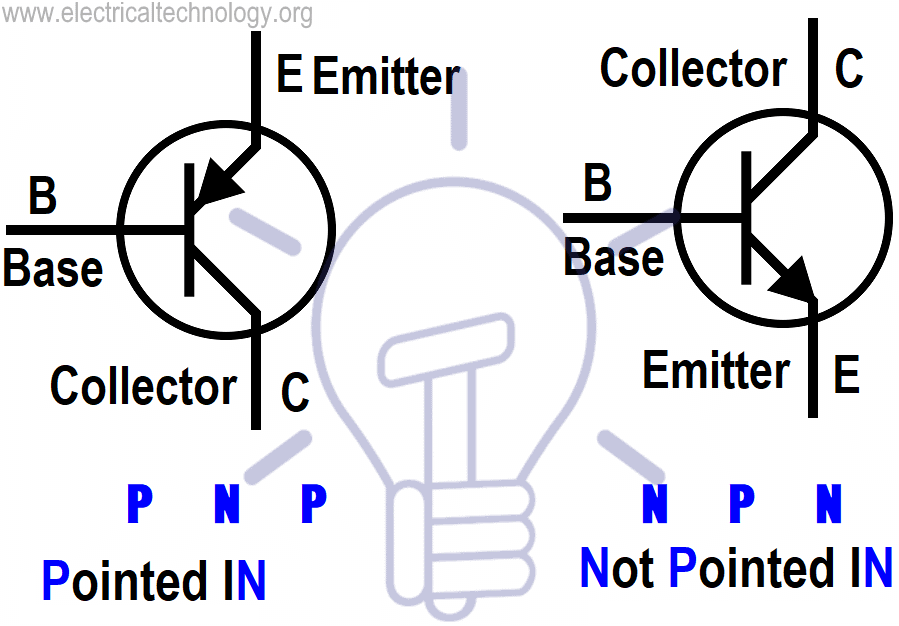What Is The Job Of A Transistor

What is the job of a transistor
transistor, semiconductor device for amplifying, controlling, and generating electrical signals.
What are the two main functions of a transistor?
A transistor is a semiconductor device, usually made out of silicon or germanium, used to amplify or attenuate the strength of the electric current in electronic circuits. Transistors have two basic functions: to amplify electric current or to block its passage.
Why do transistors have 3 legs?
The transistor has three legs, these are the base, collector and the emitter. The emitter is always connected to 0v and the electronics that is to be switch on is connected between the collector and the positive power supply. The base of the transistor is used to switch current through the collector and emitter.
What is a transistor made up of?
Most transistors are made from very pure silicon, and some from germanium, but certain other semiconductor materials are sometimes used. A transistor may have only one kind of charge carrier, in a field-effect transistor, or may have two kinds of charge carriers in bipolar junction transistor devices.
Do transistors wear out?
And wear they do—though you'll probably never notice it. The degradation of their transistors over time leads slowly but surely to decreased switching speeds, and it can even result in outright circuit failures.
Why do motors need transistors?
About Transistors Most motors require more current and/or voltage to operate. A transistor can act as a digital switch, enabling the Arduino to control loads with higher electrical requirements. The transistor in this example completes the motor's circuit to ground.
What are 5 devices that transistors are used in?
Transistors are also found in pacemakers, hearing aids, cameras, calculators, and watches. Most of these devices draw their power from tiny batteries. Most spacecraft also rely on microchips, and thus transistors.
Why is transistor made?
A transistor is an electronic component that is used in circuits to either amplify or switch electrical signals or power, allowing it to be used in a wide array of electronic devices. A transistor consists of two PN diodes connected back to back. It has three terminals namely emitter, base and collector.
How can I make a transistor?
Easy n-Channel Transistor
- Start with p-doped silicon.
- Grow thin silicon dioxide layer.
- Deposit nitride layer.
- Apply photoresist polymer.
- Bring in mask.
- Turn off regular light.
- Expose to UV light.
- Turn on regular light.
What causes a transistor to fail?
External causes such as spikes in the power supply, heat, mechanical damage can also result in transistor failures. Hence, all transistors should be adequately protected against overvoltage. Poor Circuit design. Improperly chosen components and wrong circuit design can also result in transistor failure.
What happens if a transistor fails?
When a diode or a transistor fails, one of two things usually happens: A junction (or junctions) go short circuit (its resistance becomes very low or zero). A junction (or junctions) go open circuit (its resistance becomes very high or infinity).
How do I know if a transistor is bad?
Connect the positive probe of the DMM to the base or the “P” or the base of the above figure for the NPN type. Connect the negative probe to the “N” or the emitter. A good transistor will read a voltage around 0.7V. A bad transistor will read otherwise.
How are transistors activated?
With a zero signal applied to the Base of the transistor it turns “OFF” acting like an open switch and zero collector current flows. With a positive signal applied to the Base of the transistor it turns “ON” acting like a closed switch and maximum circuit current flows through the device.
Can motors work without magnets?
2.3. Induction motors contain no permanent magnetic materials, instead they operate by inducing electrical currents in conductors in the motor's rotor; these currents in turn give rise to a magnetic field in the rotor and thus produce torque.
How do transistors regulate current?
So what's happening is we're using a small voltage and current to control a larger voltage and
What is example of transistor?
Microphones are a classic example of daily use devices that make use of transistors for their basic operation. Various microphones such as a condenser microphone typically make use of an electronic circuit that tends to perform impedance modification by converting mechanical waves into an electrical signal.
Does every device have a transistor?
Virtually every modern electronic device has a transistor as one of its primary active components. Because they are the building blocks of microchips, computer, phones, and other devices couldn't exist without transistors.
What device has the most transistors?
As of 2022, the largest transistor count in a commercially available microprocessor is 114 billion transistors, in Apple's ARM-based dual-die M1 Ultra system on a chip, which is fabricated using TSMC's 5 nm semiconductor manufacturing process.
Is a transistor necessary?
Why is transistor important? Almost nothing in electronics happens without transistors. They are the basis for all integrated circuits, including computers, cell phones, etc. Pretty important.
What is so great about transistor?
Currently, billions of transistors can fit in an area the size of a single vacuum tube. The transistor also provides advantages over the vacuum tube in terms of reliability and power usage. While vacuum tubes regularly break and need to be replaced, transistors are very durable and can last for many years.












Post a Comment for "What Is The Job Of A Transistor"